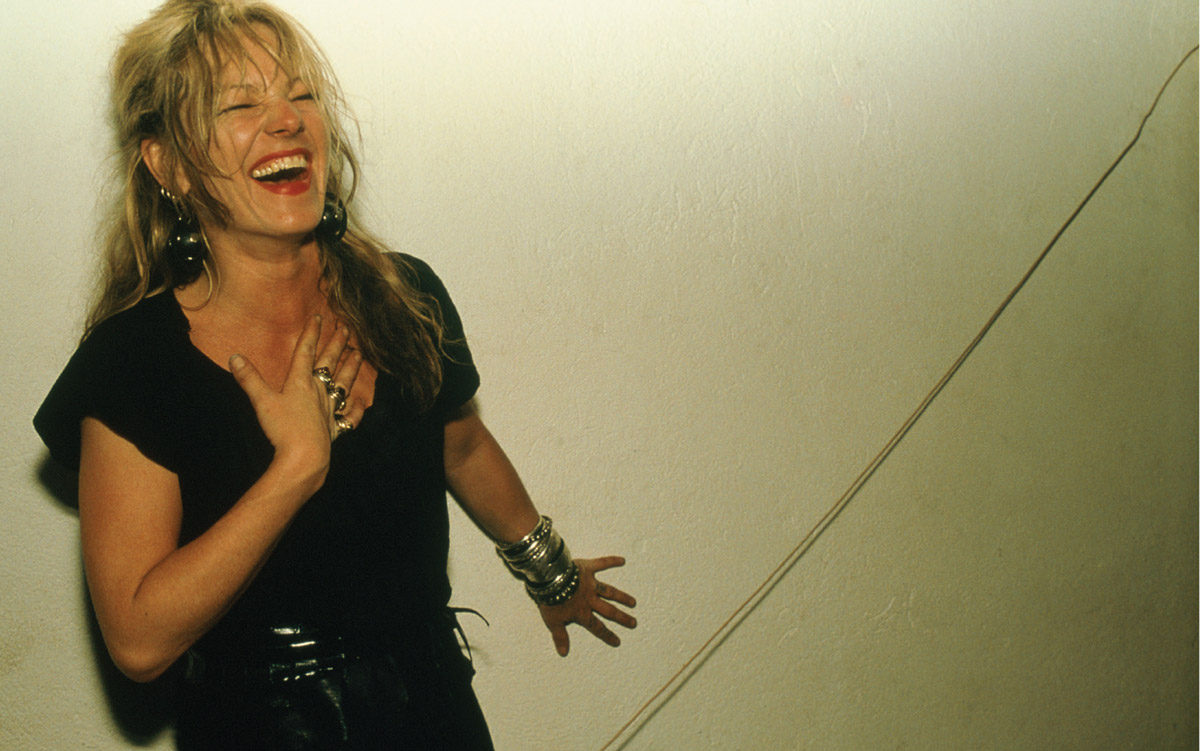With Love, a Letter to Cookie, and Her Stories
The diary, the letter, the list
Alice Butler

Dear Cookie,
I knew your face from the pictures first.
No one looks as ravishing in red at 4 a.m. on a toilet seat, lacy red knickers stretched down to your knees, with triangles of skin peeping through the folds of red fabric you probably fashioned together a few hours before the party.
No one looks as “alive” dead as you do in your casket, with bangles stacked up to your elbow like a glistening, gold Cleopatra.
I knew your face from the pictures first, but then I found your books and came to your writing. It is this body that I long for, the body of your stories.
I long to touch those eyes, that skin, that face, that fabric, but instead it’s my writing you that touches, a second skin.
It is a skin that scratches, to find the other you.
Cookie Mueller and Nan Goldin became friends while staying in Provincetown in the summer of 1976, a wild and windy outpost for two young women breaking from their past. Nan had broken from the name Nancy, and Dorothy Karen somehow “got the name Cookie,” before she “could walk.”[1]
Cookie was having a yard sale, and Nan, a photographer from Boston’s School of the Museum of Fine Arts, was enamored by her image: “a cross between a Tobacco Road outlaw and a Hollywood B-Girl, the most fabulous woman I’d ever seen.”[2] After their first meeting, Nan shot Cookie in various settings, dressed in disorderly silks, always fabulous. And so they became closer with each click of the shutter, as they traveled from Provincetown to Baltimore to New York to the Amalfi coast in Italy, in unpredictable zigzags.
Many of the photographs are part of Nan’s 35 mm, soundtracked slideshow The Ballad of Sexual Dependency, while others are to be found in The Cookie Portfolio, a collection of fifteen images later made into a book. The portfolio’s pictures begin in Provincetown, with a sun-kissed Cookie locking her arms around her son Max in one picture, and her girlfriend Sharon in another, before moving through the New York party days, her mouth wide open in more than one picture; then her wedding to the artist Vittorio Scarpati, and the fairly sudden arrival of the symptoms of the disease that would kill her. Her face becomes less clear, as the carefree cackle fades with stroke-induced pain. In many of the later photographs, we see her only in profile, in shadow, or abstracted by the scans of an X-ray machine. Nan’s final picture of “Cookie” is of her empty apartment on New York’s Bleecker Street: with no body present, it is the striped sofa that remains, framed by framed portraits, and the pointless stuff of the living.